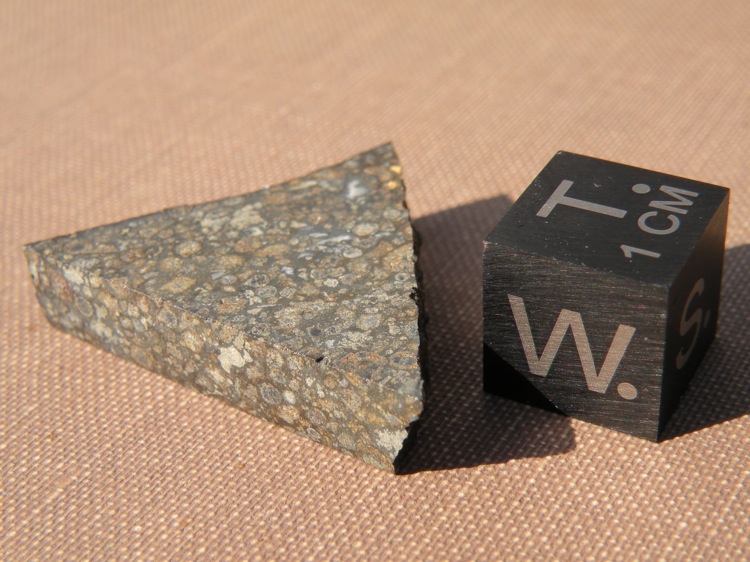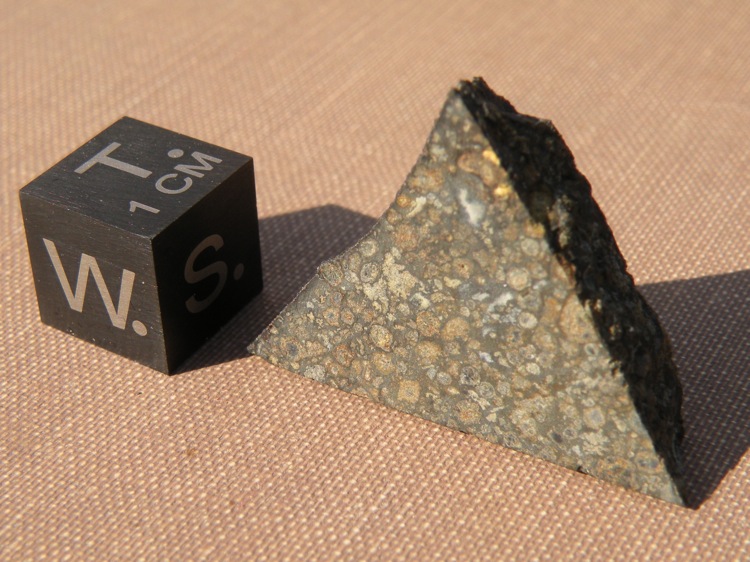 | | | Collecting and preserving meteorites since 1998. |
| |
|  |
|
|
Allende is one of the most famous and most-studied meteorites ever found. It is also one of the few meteorites to have its own Wikipedia page.
The Fall (From Wikipedia)
The original stone is believed to have been approximately the size of an automobile traveling towards the Earth at more than 10 miles per second. The fall occurred in the early morning hours of February 8, 1969. At 01:05 a huge, brilliant fireball approached from the southwest and lit the sky and ground for hundreds of miles. It exploded and broke up to produce thousands of fusion crusted individuals. The fall took place in northern Mexico, near the village of Pueblito de Allende in the state of Chihuahua.
Science (From Wikipedia)
Allende is often called "the best-studied meteorite in history." There are several reasons for this: Allende fell in early 1969, just months before the Apollo program was to return the first moon rocks. This was a time of great excitement and energy among planetary scientists. The field was attracting many new workers and laboratories were being improved. As a result, the scientific community was immediately ready to study the new meteorite. A number of museums launched expeditions to Mexico to collect samples, including the Smithsonian Institution and together they collected hundreds of kilograms of material with CAIs. The CAIs are billions of years old, and help to determine the age of the solar system. The CAIs had very unusual isotopic compositions, with many being distinct from the Earth, Moon and other meteorites for a wide variety of isotopes. These "isotope anomalies" contain evidence for processes that occurred in other stars before the solar system formed.
Allende contains chondrules and CAIs that are estimated to be 4.567 billion years old, the oldest known matter (other carbonaceous chondrites also contain these). This material is 30 million years older than the Earth and 287 million years older than the oldest rock known on Earth, Thus, the Allende meteorite has revealed information about conditions prevailing during the early formation of our solar system. Carbonaceous chondrites, including Allende, are the most primitive meteorites, and contain the most primitive known matter. They have undergone the least mixing and remelting since the early stages of solar system formation. Because of this, their age is frequently taken as the "age of the solar system."
--------------------
The following slices came from an older collection and are of an interesting, colorful lithology of Allende. They are rich in CAI's and AOA's, and some possess primitive, dark, carbonaceous clasts. These specimens smell slightly of sulfur, and have done so since they were purchased in the early 2000s.
4.950 gram thick part-slice - $59

 
Same great chondrules, textured/frothy crust, and CAI's.
4.950 grams - $59
Send an Email
4.735 gram thick part-slice - sold
32.426 gram thick part slice - sold |
| | |
|
